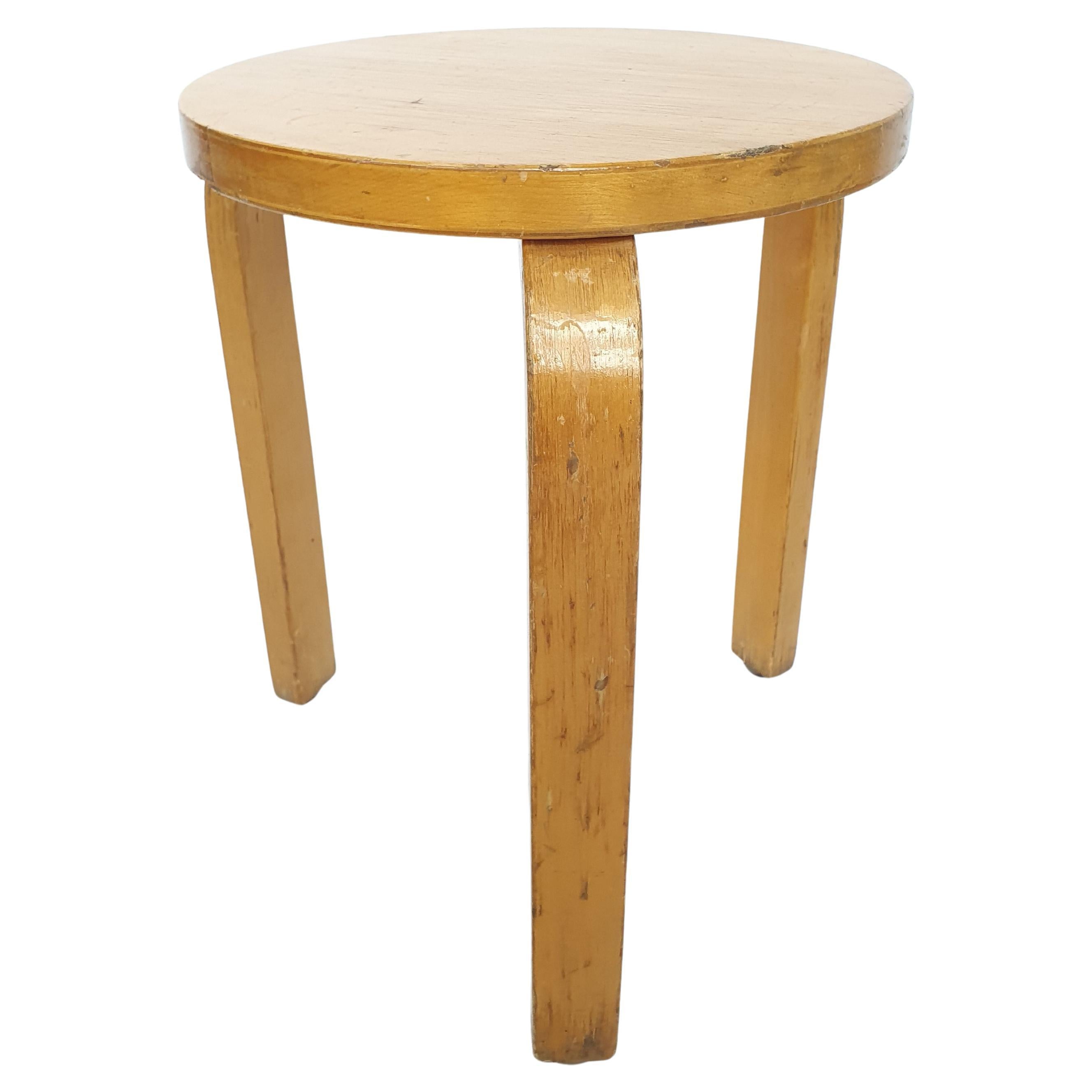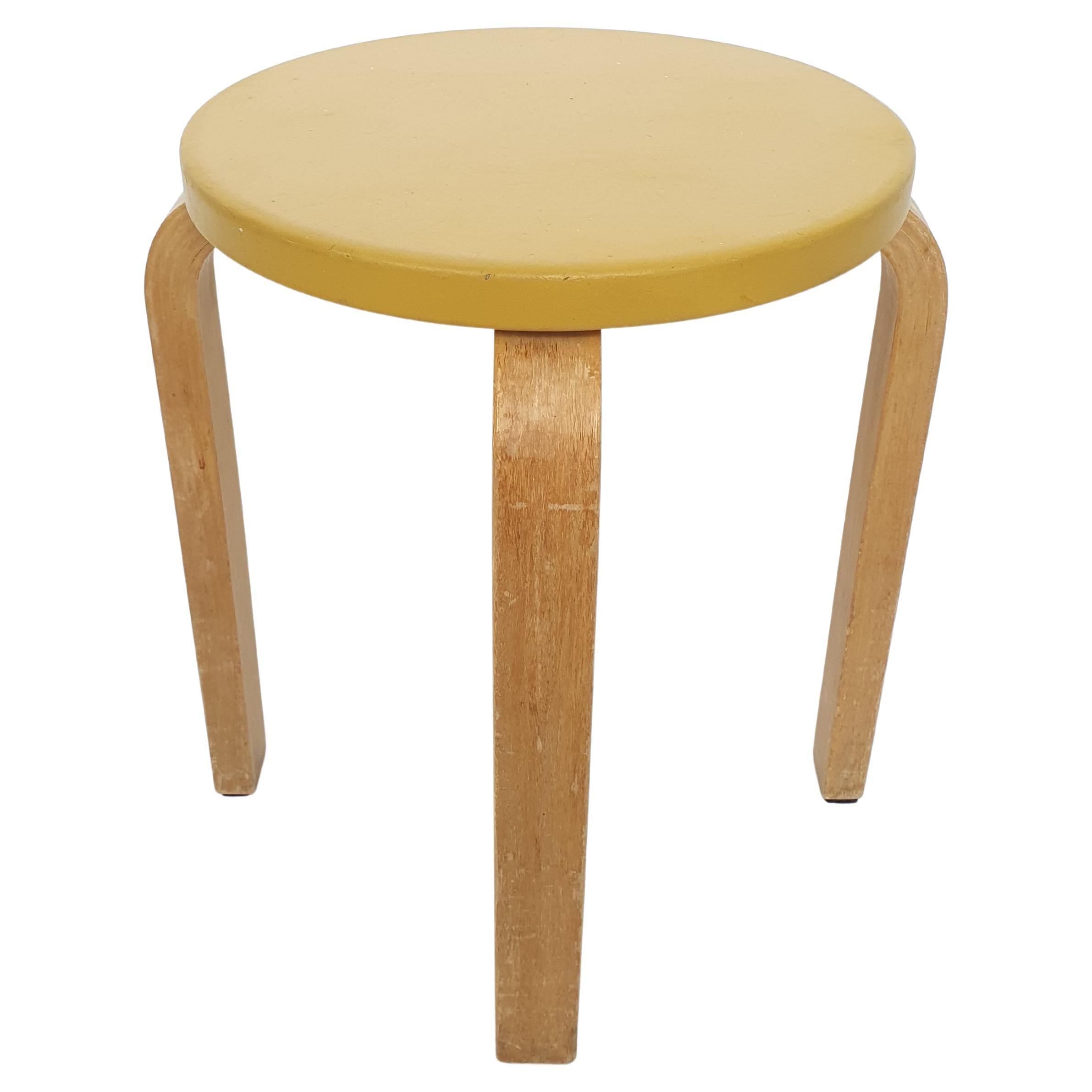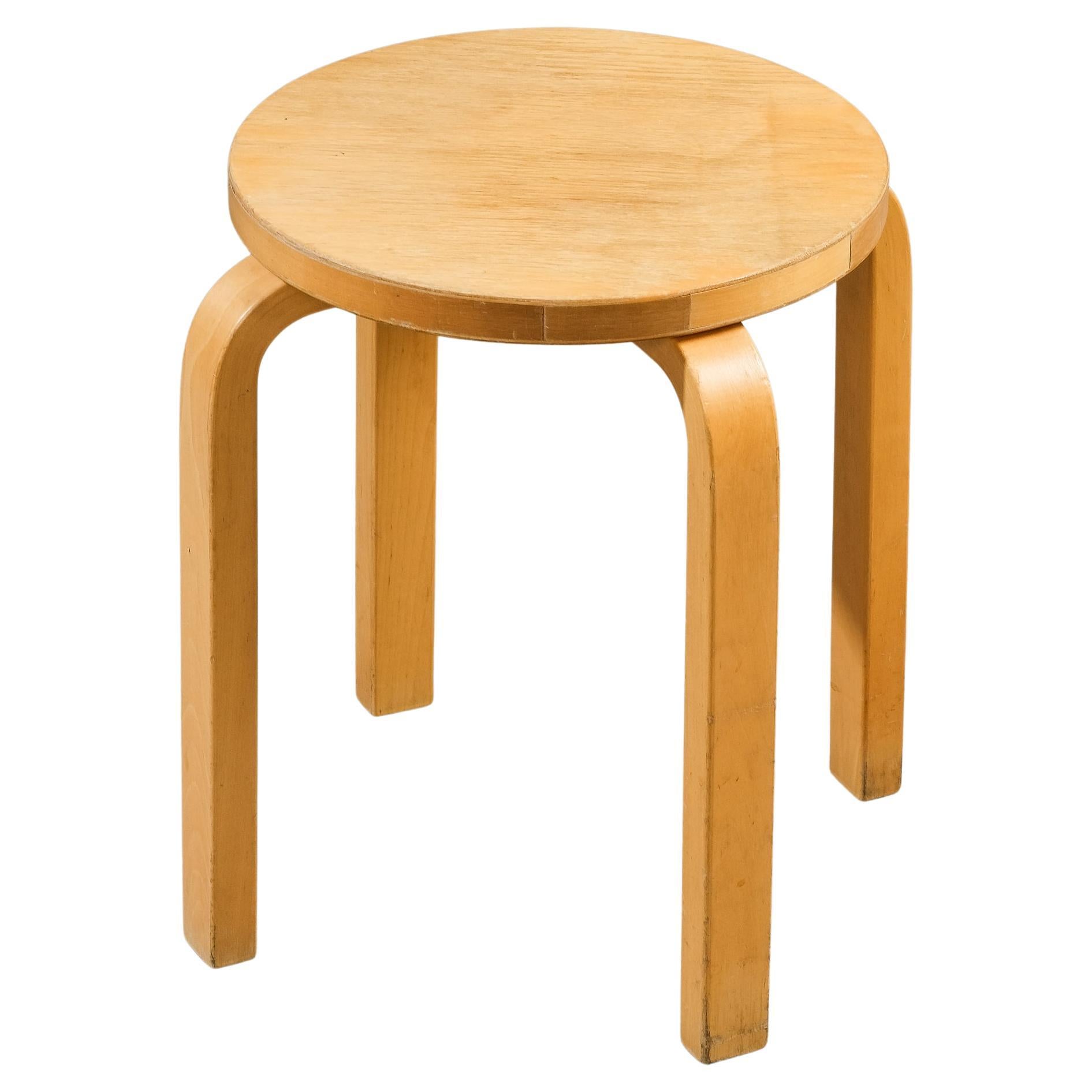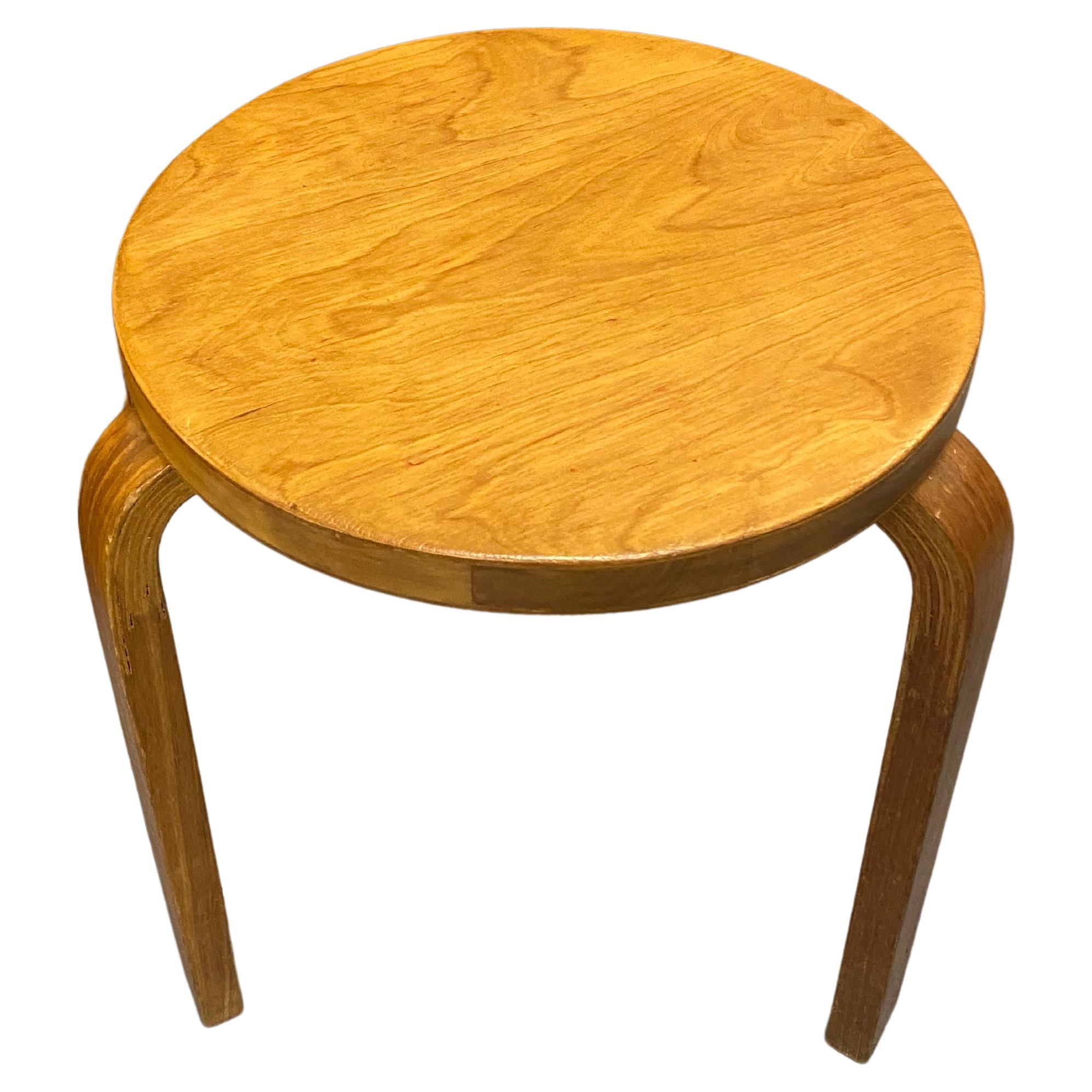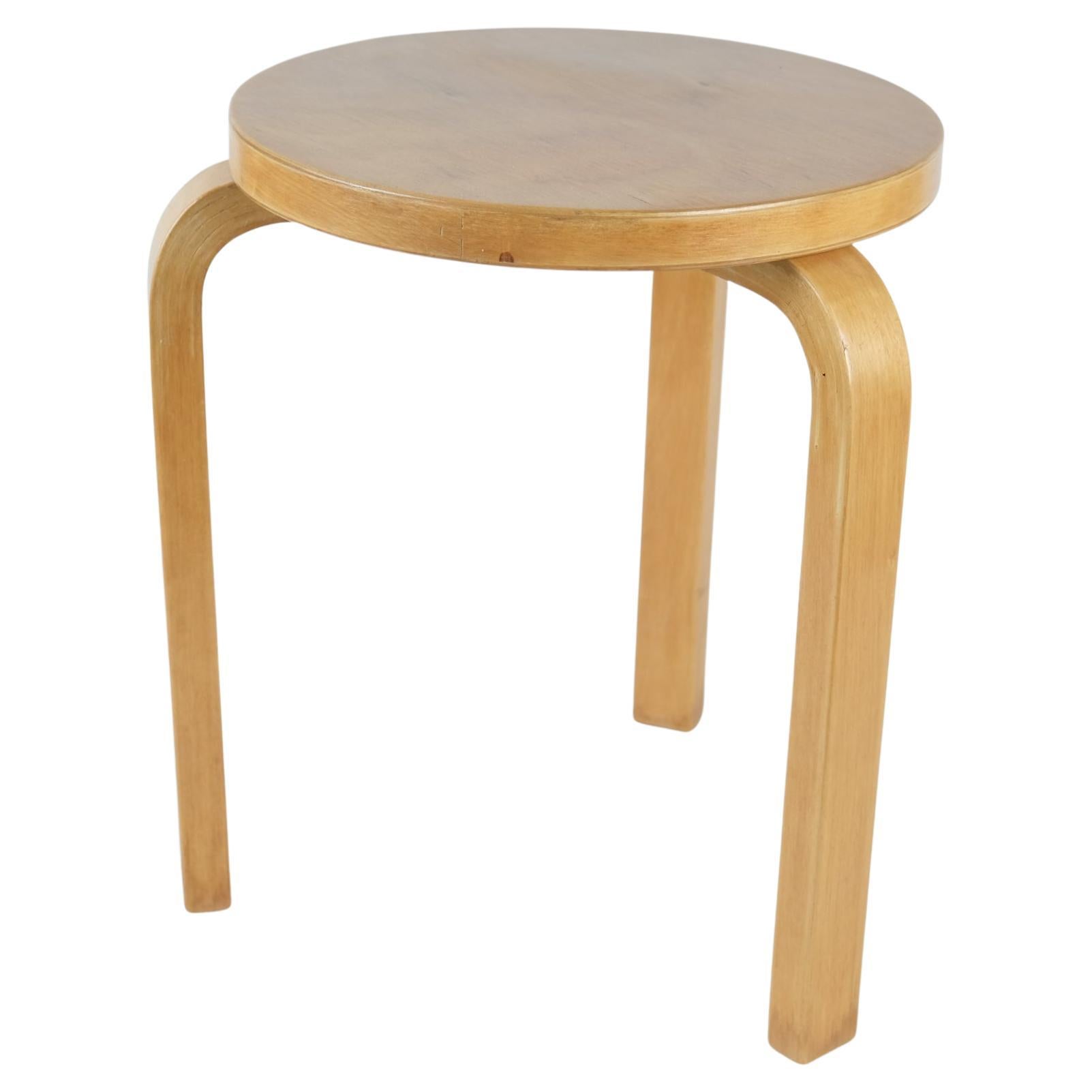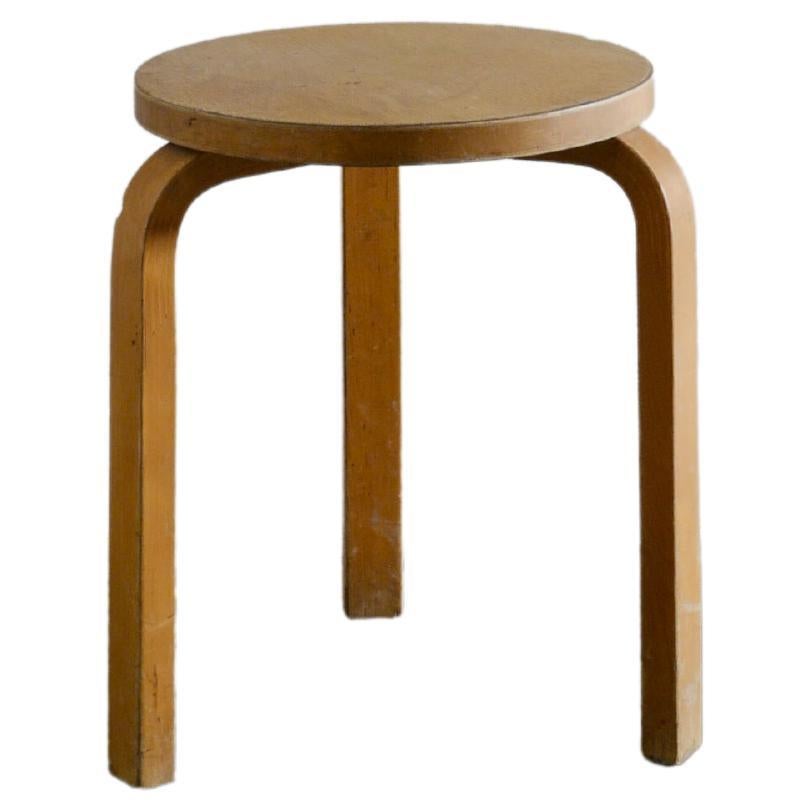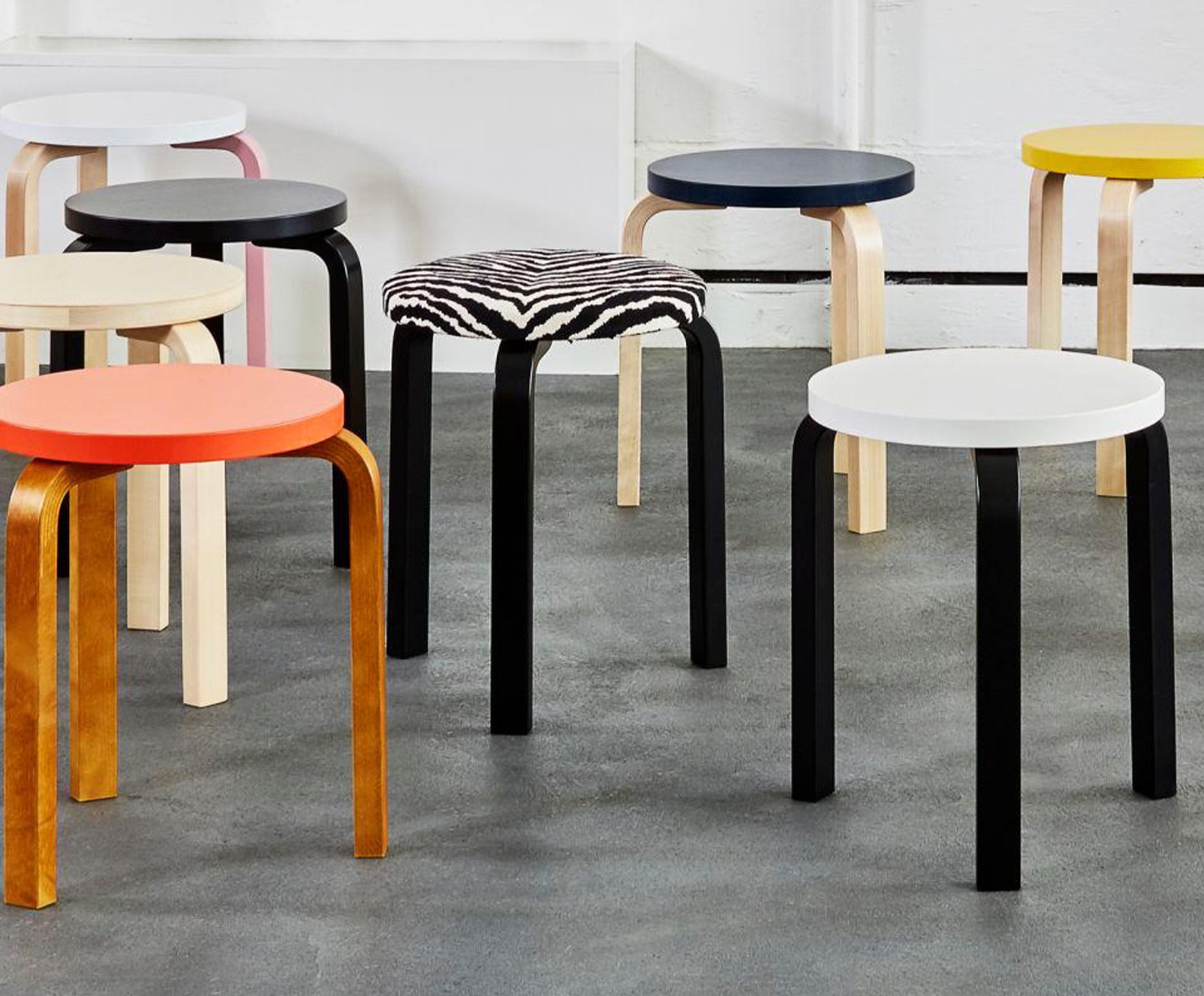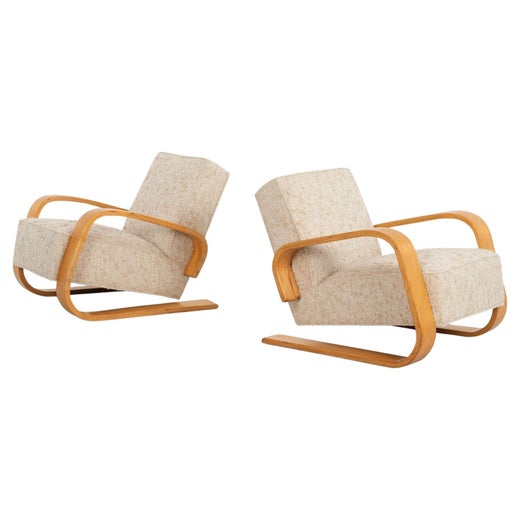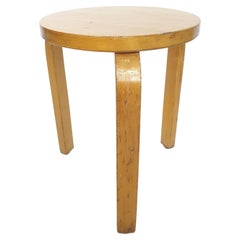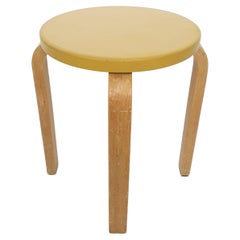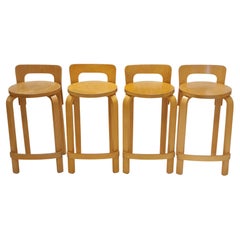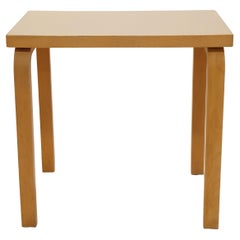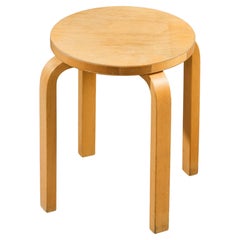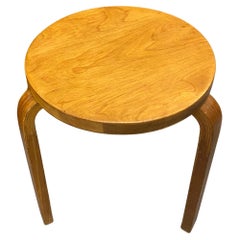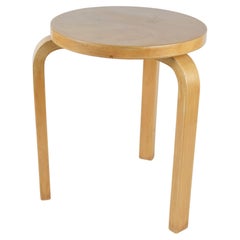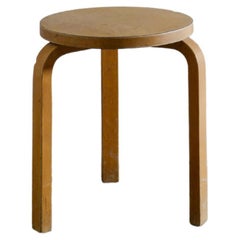Alvar Aalto Stool 60 by Artek in 1960s
About the Item
- Creator:Alvar Aalto (Designer),Artek (Manufacturer)
- Design:Stool 60L-Leg Series
- Dimensions:Height: 17.33 in (44 cm)Diameter: 14.97 in (38 cm)Seat Height: 17.33 in (44 cm)
- Style:Scandinavian Modern (Of the Period)
- Materials and Techniques:
- Place of Origin:
- Period:
- Date of Manufacture:1960s
- Condition:Wear consistent with age and use.
- Seller Location:Espoo, FI
- Reference Number:1stDibs: LU10014241973372
Stool 60
Although Finnish architect and furniture maker Alvar Aalto (1898–1976) was recognized early in his career for his decorative interiors and innovative building concepts, his functional wood furniture reflected a simplicity that extended even to his marketing copy. “One chair is enough” is one such slogan attributed to him today.
While the renowned designs he produced with his first wife Aino for a tuberculosis sanatorium in Paimio included tubular steel, Aalto eventually distanced himself from the material, differing from peers such as Marcel Breuer in that he favored working with organic materials, having deemed wood “form-inspiring” and “deeply human.” The stackable Stool 60, made of cost-effective solid birch and birch plywood, is emblematic of that approach.
In the mid- to late-1920s, with the support of fellow woodworker Otto Korhonen at a furniture factory in Turku, Finland — a densely forested country where birch trees and lumber suppliers are plentiful — Aalto developed the “bent-knee” technique for making furniture. It involves a solid piece of birch soaked and softened in water and then sawed open in the direction of the wood grain. Afterward, thin slats of wood are glued into the grooves, and the wood is heated so that it becomes malleable.
The bent-knee process, which has changed little since its inception, yielded the “L-leg” that Aalto initially had in mind for his Stool 60. Three L-legs were mounted to the underside of the flat, circular plywood seat of the Stool 60 in the Turku factory, but Aalto’s innovation had applications for tables and a lot more. The furniture maker called the L-leg “the little sister of the architectural column.”
When the first prototype of the deceptively simplistic-looking Stool 60 materialized, Aalto and Korhonen tossed the piece across the sprawling factory floor to test its durability. Aalto told all in earshot, “We’ll make thousands of these one day!” It was a fairly modest prediction: Debuting at an exhibition of Finnish design in 1933, the Stool 60 was a revolutionary piece of seating furniture, and it has sold millions.
It is now available with seats in various colors and is part of the permanent collection at the Museum of Modern Art in New York City. The library for which the stool was first intended won the World Monuments Fund/Knoll Modernism Prize in 2014.
The Stool 60 is currently manufactured by Artek, which the Aaltos helped cofound, and it is one of the company’s most cherished products.
Alvar Aalto
An architect and designer, Alvar Aalto deserves an immense share of the credit for bringing Scandinavian modernism and Nordic design to a prominent place in the global arena. In both his buildings and his vintage furniture — which ranges from chairs, stools, tables and lighting to table- and glassware — Aalto’s sensitivity to the natural world and to organic forms and materials tempered the hardness of rationalist design.
Relatively few Aalto buildings exist outside Finland. (Just four exist in the United States, and only one — the sinuous 1945 Baker House dormitory at M.I.T. — is easily visited.) International attention came to Aalto, whose surname translates to English as “wave,” primarily through his furnishings.
Instead of the tubular metal framing favored by the Bauhaus designers and Le Corbusier, Aalto insisted on wood. His aesthetic is best represented by the Paimio armchair, developed with his wife, Aino Aalto, in 1930 as part of the overall design of a Finnish tuberculosis sanatorium.
Comfortable, yet light enough to be easily moved by patients, the Paimio chair’s frame is composed of two laminated birch loops; the seat and back are formed from a single sheet of plywood that scrolls under the headrest and beneath the knees, creating a sort of pillow effect. Aalto’s use of plywood had an enormous influence on Charles and Ray Eames, Arne Jacobsen, Marcel Breuer and others who later came to the material.
Concerned with keeping up standards of quality in the production of his designs, Aalto formed the still-extant company Artek in 1935, along with Aino, whose glass designs were made by the firm. In the latter medium, in 1936 the Aaltos together created the iconic, undulating Savoy vase, so-called for the luxe Helsinki restaurant for which the piece was designed.
Artek also produced Aalto pendants and other lighting designs, many of which — such as the Angel’s Wing floor lamp and the Beehive pendant — incorporate a signature Aalto detail: shades made of concentric enameled-metal rings graduated down in diameter. The effect of the technique is essential Alvar Aalto: at once precise, simple, and somehow poetic.
Find a collection of vintage Alvar Aalto stools, vases, dining tables and other furniture on 1stDibs.
- ShippingRetrieving quote...Shipping from: Espoo, Finland
- Return Policy
More From This Seller
View AllVintage 1960s Finnish Scandinavian Modern Stools
Birch
Vintage 1960s Finnish Scandinavian Modern Stools
Faux Leather, Birch
Vintage 1960s Finnish Scandinavian Modern Stools
Birch
Vintage 1950s Finnish Scandinavian Modern Side Tables
Birch
Vintage 1960s Finnish Scandinavian Modern Stools
Leather, Birch
Vintage 1950s Finnish Scandinavian Modern Side Tables
Birch
You May Also Like
Vintage 1970s Finnish Scandinavian Modern Stools
Birch
Vintage 1960s Finnish Scandinavian Modern Stools
Birch
Vintage 1930s Finnish Scandinavian Modern Stools
Birch
Vintage 1940s Finnish Scandinavian Modern Stools
Birch
Vintage 1960s Finnish Mid-Century Modern Stools
Leather, Wood
Vintage 1960s Finnish Scandinavian Modern Stools
Birch
Read More
The Married Collectors behind Stockholm’s Newest Design Museum
Kersti Sandin and Lars Bülow want their new endeavor to educate both students and professionals about furniture design.
The Very Modern Love Story of Mid-Century Design Duo Alvar and Aino Aalto
A power couple before the term existed, the influential pair made work that still resonates today.
